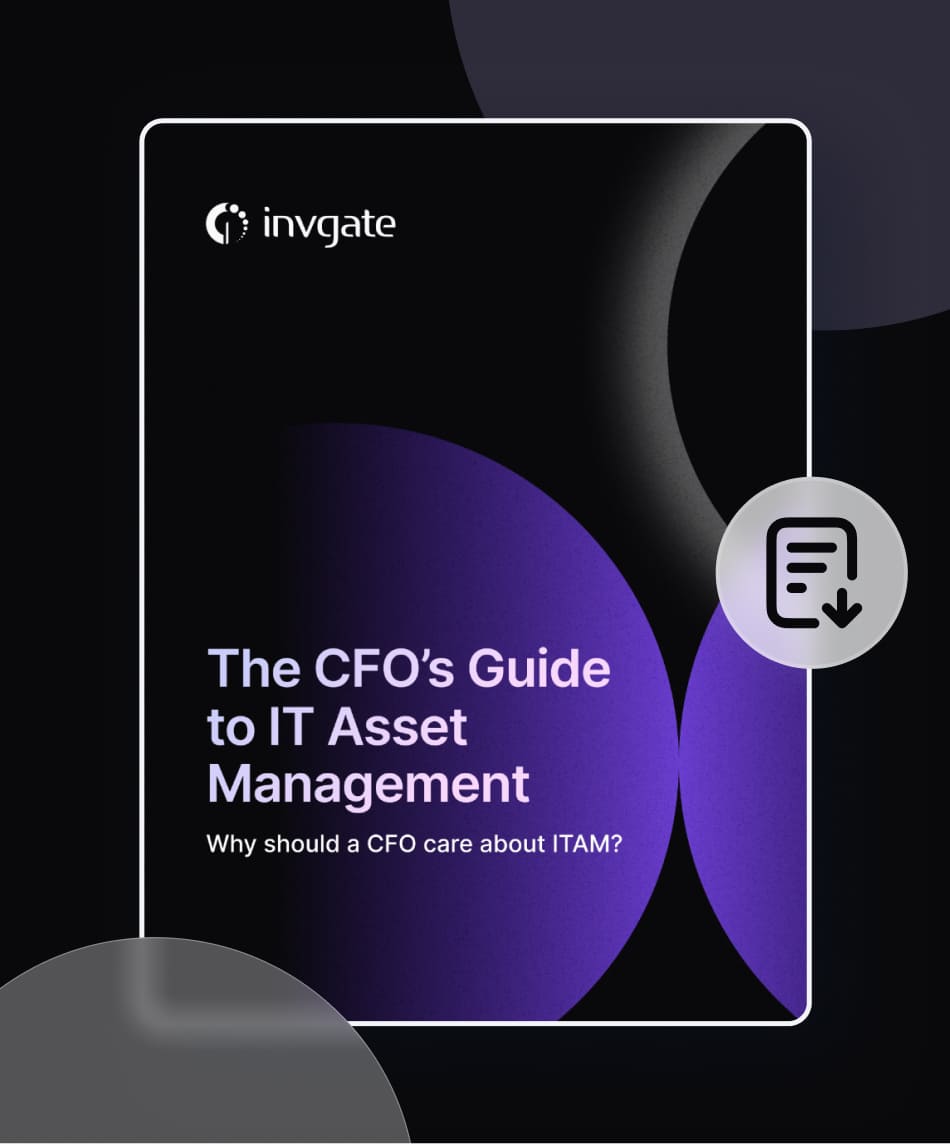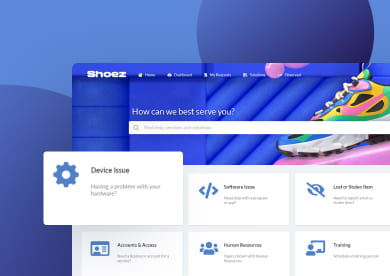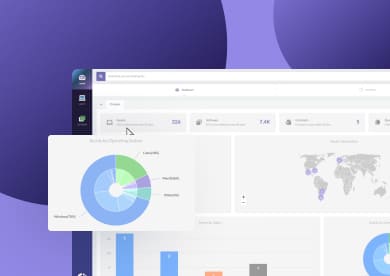Technology has moved beyond a support function and now plays a central role in business strategy and financial performance. For CFOs, this shift requires a deeper understanding of technology investments, Risk Management, and cost optimization.
AI, cloud computing, and automation continue to reshape industries. Staying ahead requires CFOs to take an active role and work with CIOs and CTOs to align technology spending with long-term business goals.
And, of course, making sure those investments actually pay off. In this article, we’re sharing insights to help your organization stay agile, compliant, and financially strong.
Want to take it a step further? Download our ITAM Guide for CFOs to learn how IT Asset Management can bring even more financial control to your technology strategy.
The CFO’s Guide to IT Asset Management
Optimize costs, enhance compliance, and align IT spending with goals.
Download for free
Why should a CFO care about IT?
Technology decisions affect every part of an organization, from financial reporting to customer engagement. Businesses that integrate digital tools effectively can streamline operations, improve forecasting accuracy, and strengthen their market position.
On the other hand, companies that fall behind in adopting new technologies risk inefficiency, security vulnerabilities, and financial losses.
For CFOs, key areas of focus include:
- Technology’s direct impact on financial performance: AI-driven forecasting tools and automated financial systems reduce errors, lower costs, and improve efficiency.
- Regulatory compliance and security: Weak IT governance increases the risk of compliance violations, security breaches, and financial penalties.
- Staying ahead: Delaying modernization limits a company’s ability to adapt and grow in a rapidly evolving business environment.

CFOs taking control of technology spending
You’ve probably seen countless articles about digital transformation. If you’re reading this, you likely don’t need another one. What you do need is a clearer view of whether your company’s technology investments are truly under control.
Over the years, businesses accumulate software, hardware, and cloud services—often without a structured plan to manage them. The result? Rising costs, compliance risks, and inefficiencies that go unnoticed until they become a problem.
The future of the CFO role demands to start playing a direct role in shaping technology strategies that support business objectives. Technology investments should deliver measurable business value rather than being seen as IT-driven initiatives.
A Chief Financial Officer's key tasks and responsibilities to take an active role in IT include:
- Ensuring that technology investments align with business goals. Every dollar allocated to IT should contribute to efficiency, growth, or risk reduction.
- Building strong partnerships with IT leaders. Regular collaboration with CIOs and CTOs allows finance teams to assess emerging technologies and manage costs effectively.
- Balancing financial discipline with innovation. Cost control matters, but rigid constraints can slow progress. CFOs must support calculated risks that drive long-term value.
- Developing a sustainable technology roadmap. Digital transformation requires ongoing investment and a clear strategy for adapting to industry trends.
Leading CFOs don’t just approve IT budgets; they work with IT leaders from the start of the planning process to align technology with business goals. According to a survey by the IBM Institute for Business Value nearly half of the top-performing CFOs engage in early IT planning to set clear expectations on how technology supports innovation, efficiency, and competitive advantage.
"I see IT and the CIO as my strongest counterparts. The CIO has to understand the whole end-to-end process, translating business requirements—and then implementing them for an IT solution."
Martin Günther CFO, smart Europe GmbH
In: IBM, 6 power moves CFOs must make
CFO and IT Asset Management: maximizing value
IT Asset Management gives finance leaders the ability to track, optimize, and control technology expenses. It’s not just an IT concern; it’s a financial strategy that protects budgets and maximizes value.
IT professionals have long-built tools to manage complexity — ITSM, automation, and asset tracking are examples of how they’ve structured their own processes. CFOs can take advantage of this expertise to bring the same level of control to financial planning.
IT Asset Management is a great ally when it comes to controlling costs, reducing risks, and improving operational efficiency. Without clear oversight, businesses overspend on software, lose track of hardware, and expose themselves to compliance issues.
Common causes of waste and inefficiency include:
- Unused software licenses. Many organizations pay for software they don’t fully utilize, wasting resources that could be allocated elsewhere.
- Lack of visibility into hardware assets. Poor tracking leads to unnecessary purchases, higher maintenance costs, and security vulnerabilities.
- Failure to plan for asset depreciation. Untracked IT assets result in unexpected capital expenditures when replacements are needed.
- Shadow IT. Unapproved technology purchases introduce security risks and additional costs outside standard procurement processes.

Actions CFOs can take
- Integrate ITAM into IT financial planning. Treat IT asset management as a structured financial discipline rather than an operational task.
- Use IT asset tracking tools. Centralized systems improve visibility into hardware, software, and cloud assets.
- Enforce compliance with software licensing. Avoid costly audits and legal risks by monitoring software usage and software contract terms.
- Optimize cloud and SaaS expenses. Implement governance frameworks to prevent unnecessary spending on redundant applications.
- Manage asset lifecycles proactively. Plan for technology upgrades and replacements to avoid unexpected financial strain.

Benefits of effective ITAM
- Lower technology costs: Eliminating redundant assets and optimizing software usage reduces wasteful spending.
- More accurate financial forecasting: Clear asset tracking allows for better budgeting and planning.
- Stronger compliance and security: A structured approach minimizes legal risks and enhances cybersecurity measures.
- Greater return on technology investments: ITAM ensures that spending aligns with business needs, improving overall efficiency and value.
Final words
As a CFO, you don't need to be a tech expert but you do need to understand how technology investments influence your organization's financial health.
You've probably made significant tech investments over the years, but are you truly in control of how they perform? Are you leveraging the right tools to track their impact and efficiency?
The good news is, IT has been quietly building tools to make their processes smarter—and guess what? You can use that same know-how to manage your tech investments better.
There are practical ways to cut through the noise and get actionable insights into what's working and what's not. And ITAM can help you take charge of your tech investments and make smarter, more efficient decisions.















